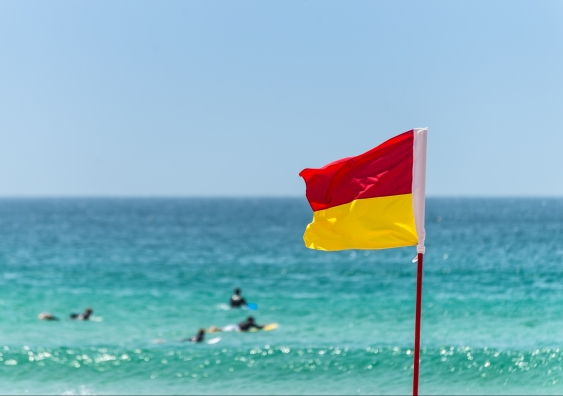OPINION: I’ve lost track of the number of people who have drowned in rip currents on Australian beaches this summer. That’s a very stark and sad statement to make, but this year is no different to others. Rip current drownings are an ongoing problem. So why are so many people drowning in rips and what can we do about it?
Every Australian surf beach has numerous strong, narrow offshore flowing rip currents that exist to take water coming in with breaking waves back out to sea. Unfortunately, many Australians and most tourists have a poor understanding of rips and are not good at spotting them. It’s not easy as there are different types of rips with complex flow patterns and visual characteristics.
Channelised rips occur along beaches and next to headlands, rocks and structures. They are the easiest to spot as they appear as darker, narrow gaps, almost like paths, of seemingly calmer, greener water between areas of breaking waves and whitewater. Think “white is nice, green is mean”. Flash rips are short-lived and literally appear out of nowhere when a random set of large waves breaks. They are difficult to predict and appear as turbulent clouds of water and sand flowing out beyond the breakers. Fortunately, there are many excellent online resources about how to spot rip currents, and it’s never too late or early to start educating yourself and others.
If you do get caught in a rip, the key thing is not to panic and not trying to swim back to the beach against the rip. This is easier said than done, especially when the beach is rapidly disappearing, but it’s important to remember that rips do not pull you under the water or across the ocean into shark-infested waters. They just take you for a ride, and there’s actually a chance they’ll bring you back into shallow water. But not always, and that’s the problem.
There’s no single escape strategy that will work in all cases. Sometimes swimming out of a rip works, sometimes it doesn’t. Floating is great because it conserves energy, and if you can relax and signal for help from a lifeguard, lifesaver or surfer, they should come and get you – if they can see you. If the rip has carried you out the back and there’s no one around and you are not a good swimmer, you’ve got a big problem.
The best option is not to get in a rip in the first place by swimming between the red and yellow flags on a patrolled beach. Last week I was quoted in the media saying that the “swim between the red and yellow flags” message was “useless” and had lost its effectiveness. I did say it, but somehow the context was lost in the headlines, which evolved into an attack on the flags themselves.
There is nothing wrong with our red and yellow flags. They work. That’s where the lifeguards and/or lifesavers are. It’s extremely rare for people to drown swimming between the flags, but unfortunately it can happen, as it did on Monday at Woolamai beach in Victoria when a man was swept out of the flags and into a rip. But swimming between the flags is still the safest place to be on an Australian beach.
My point was that many of us don’t seem to be listening to the “swim between the flags” message. Statistics show that the vast majority of Australians know they should swim between the flags, but many choose not to. There are many reasons for this. Flags on most beaches are only seasonal and are not up in the early morning or late evening. They also only cover a tiny section of beach and are often overcrowded.
Perhaps most importantly, there are many easily accessible and popular beaches that are completely unpatrolled. It’s just unrealistic to think that everyone will always swim between the flags. Yes, we absolutely need to keep pushing the message, but we need to do more. We need a combination of more flags, more lifeguards and more beach safety education for school kids, adults and international tourists.
Ultimately, all rip current drownings are avoidable – it’s all about decision-making and risk. You don’t cross a road without looking both ways, and you should never go to a beach for a swim without thinking about safety. Always spend a few minutes, preferably from a higher vantage point, looking at the beach and surf and ask yourself some simple questions. Are there flags anywhere on the beach? Are the waves big? Are there rips? Do you know what rips are? Can you swim? Are there flotation devices around, like a boogie board, that you could use if someone gets in trouble?
Thinking about beach safety for just a few minutes will absolutely save lives. Maybe that’s the next message we need to promote.
Rob Brander is Associate Professor at the School of Biological, Earth and Environmental Sciences at UNSW Sydney.
This article was originally published in The Guardian.
For further information see Science of the Surf and SLSA Beachsafe.

